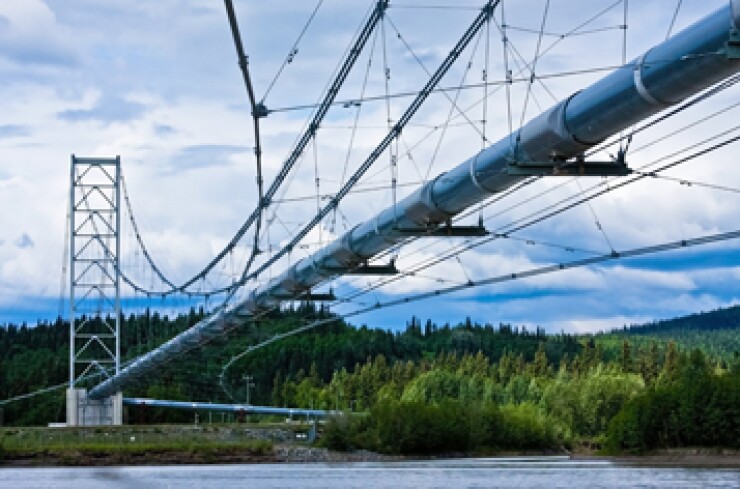
SAN FRANCISCO - Although Alaska's oil output is declining, it has a credit edge over booming North Dakota due to the exceptional size of its fiscal reserves, Moody's Investors Service said in a peer comparison report on the two states.
"North Dakota's oil output may be second among the states after Texas and booming, and Alaska's may have fallen to fourth and continues to decline, but Alaska is on a relatively stronger financial footing," wrote Moody's associate analyst John Lombardi and vice president Ted Hampton, co-authors of the report.
Alaska, which is rated Aaa with a stable outlook, has built up far greater financial reserves than has any other state, Moody's said. At 302%, Alaska's fund balances are more than three times its operating revenue, compared to 78% for North Dakota, and a 5.2% median for all states.
"These reserves offset the risks inherent in relying on oil production for operating revenue, and provide it with unusual financial flexibility," analysts said.
In the last ten years Alaska's oil production has dropped 48%. In fiscal 2014 the state's oilfields are estimated to have produced 536,300 barrels per day, on average. That amounts to only about a quarter of peak production in 1988.
North Dakota, rated Aa1 with a stable outlook, has been increasing its oil production by an average of 39% per year, every year since 2008. The state now produces about 1.1 million barrels of oil a day—a 1,223% increase from 2004.
One factor offsetting North Dakota's credit quality is its exposure to the Bank of North Dakota, an unregulated, state-owned bank, Moody's said.
The bank serves both as the state's financial arm and its economic development agent. By law, the state guarantees all deposits in the bank, which carries considerable risk, especially in the event of steep declines in property values.
Moody's views the risk as manageable because the state's available fund balances have been growing at an annual rate that is almost twice as fast as its deposits, and because the bank follows conservative policies for its loan portfolio and liquidity.





